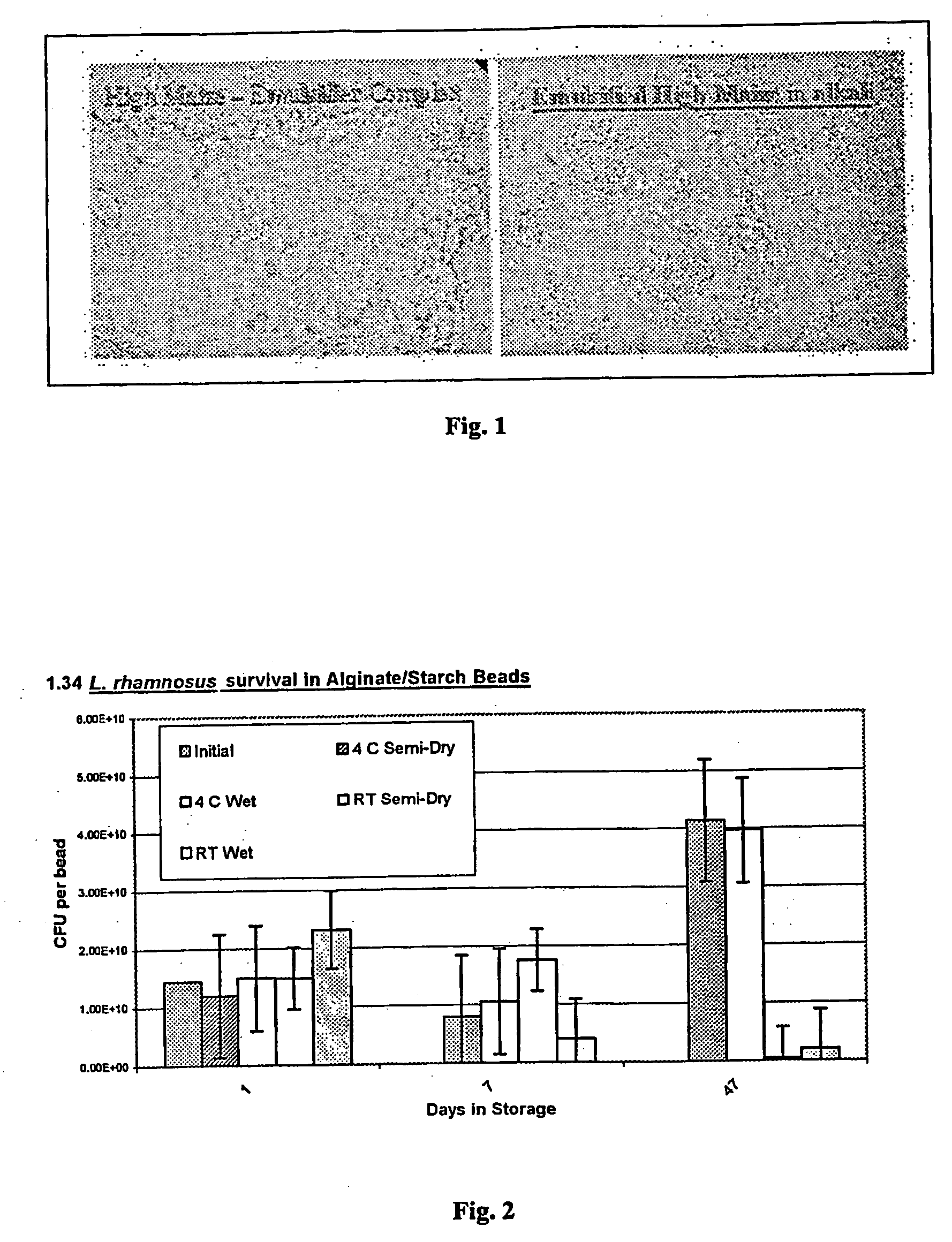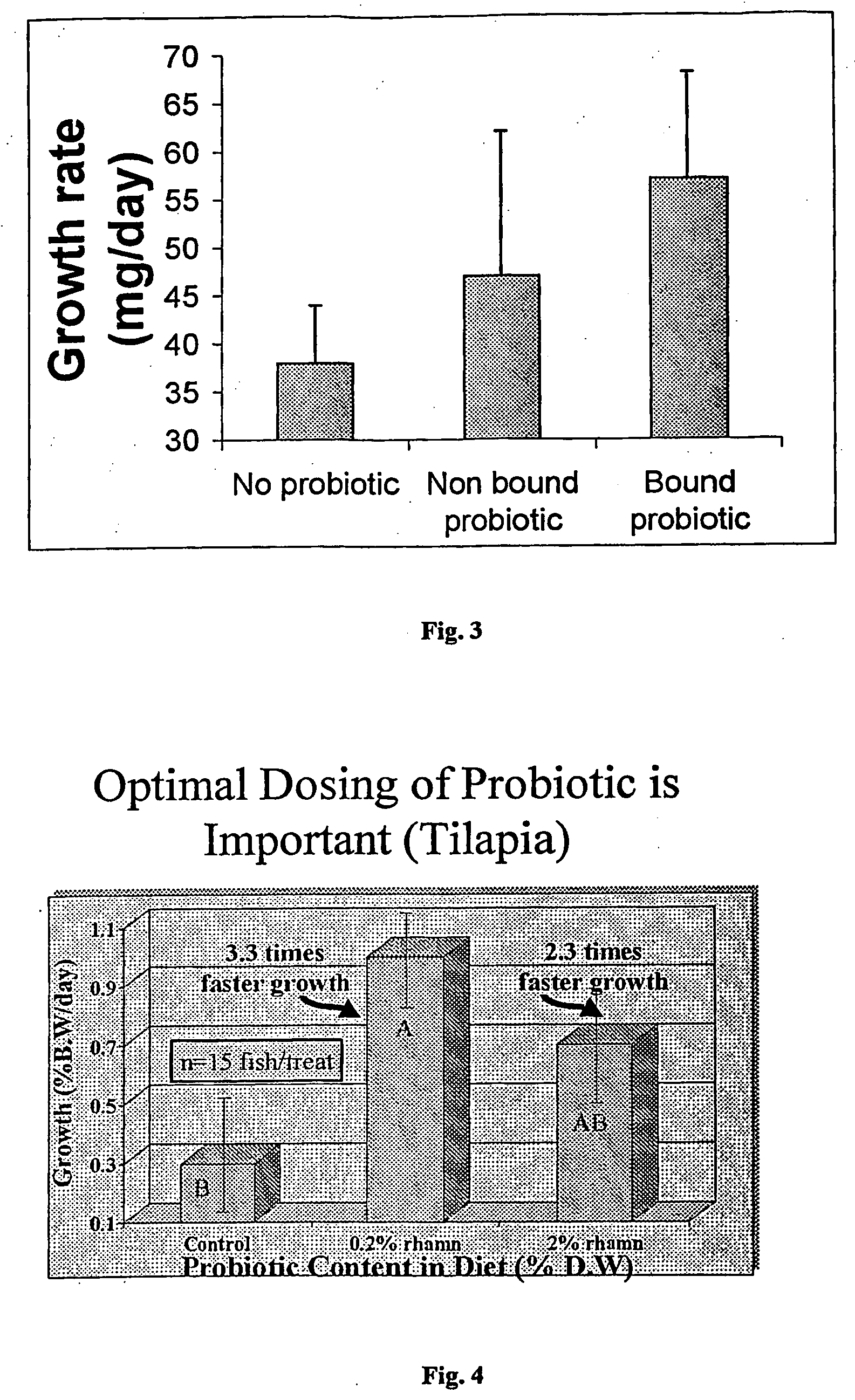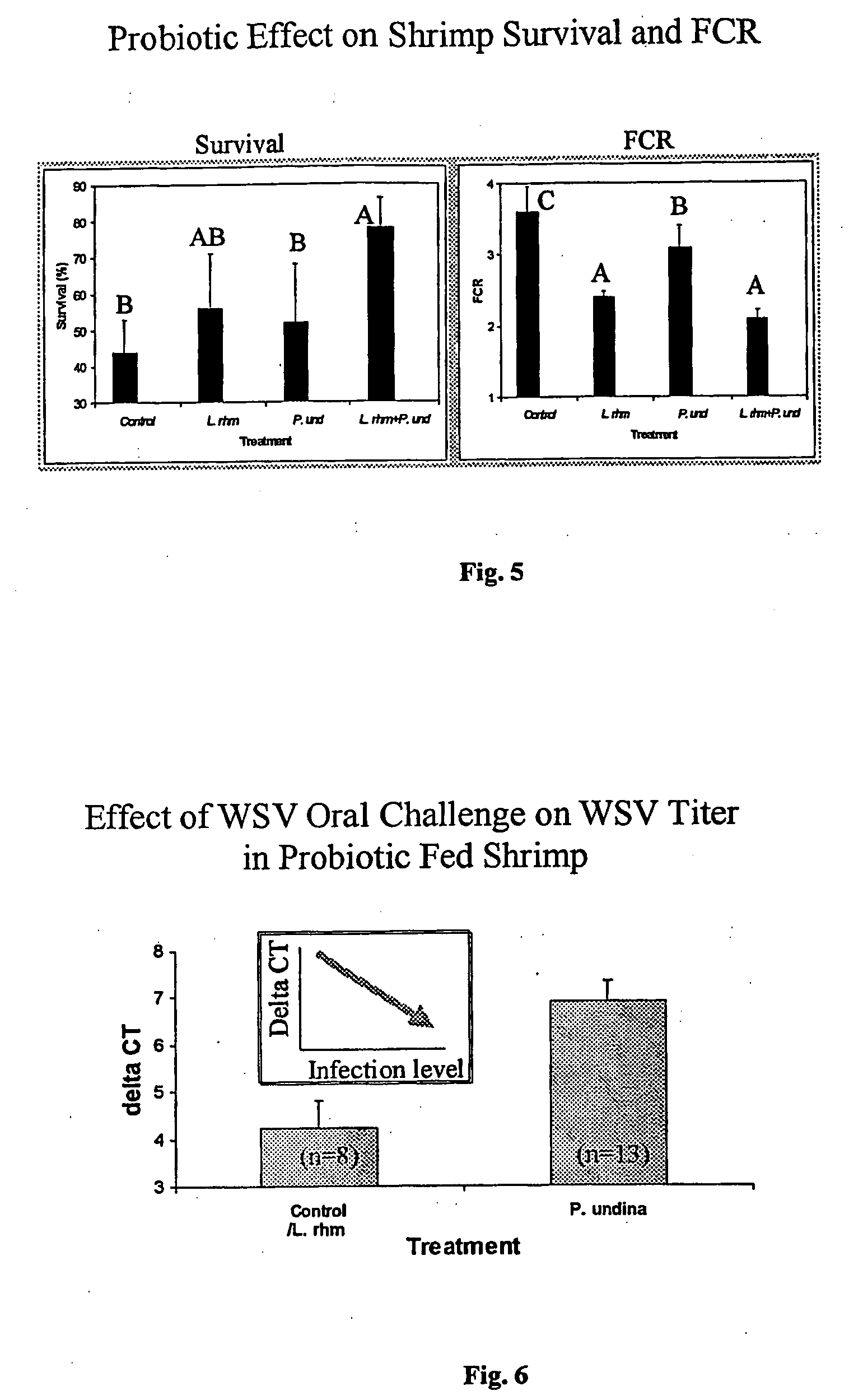Nutraceuticals and method of feeding aquatic animals
a technology of nutraceuticals and aquatic animals, applied in the field of aquatic animal feeds, can solve the problems of destroying the digestive process of animals, deteriorating conventional feeds in water, and affecting the health of animals,
- Summary
- Abstract
- Description
- Claims
- Application Information
AI Technical Summary
Benefits of technology
Problems solved by technology
Method used
Image
Examples
example 1
Production of Controlled-Released Microparticles Containing the Probiotic Microbes Lactobacillus rhamnosus
[0070] Four grams of high amylose starch (70% amylose; Hylon VII, National Starch and Chemical, Bridgewater, N.J.) was dissolved in 1 N sodium hydroxide at 50° C. (FIG. 1, left panel). Two grams of powdered egg lecithin (Archer-Daniels-Midland Co., Decatur, Ill.) was added to the alkali slurry and allowed to complex with the amylose for 30 min (FIG. 1, right panel). As shown in FIG. 1, a physical difference is observed as the starch granules become hydrated (gelatinized). The alkali complex slurry was then neutralized to pH 7.5 with hydrochloric acid. Two grams of alginic acid was then dissolved in the hydrated starch slurry then, once dissolved, allowed to cool to room temperature. Twenty grams of L. rhamnosus (LCS-742, Morinaga Milk Industry Co., LTD., Kanagawa, Japan) were added to the cooled and neutralized starch / alginate slurry. The slurry was then atomized using a Graco ...
example 2
Viability of Lactobacillus rhamnosus Bacteria in Beadlets
[0071] Beadlets were prepared as in Example 1 and left as semi-dry (i.e., the beadlets were drained of water, but the beadlets were not further dried) were tested for the viability of the microbound bacteria over time at 4° C. and at room temperature. Beadlets were tested by removing ten beadlets from the batch to a sterile Beadbeater tube containing ⅓ volume of sterile 5 mm glass beads. Sterile water (1 mL) was added to fill the tube and the tube was processed in the Beadbeater for up to three 40-second pulses to disrupt the beads. This material was serially diluted into sterile water blanks and spread plated on Lactobacillus MRS Agar (Difco). Plates were incubated at 30° C. for 2-3 days and the number of L. rhamnosus colonies counted. The survival rates of the bacteria are shown in FIG. 2. The bacterial viability decreased over time during the room temperature storage treatment but increased during the 4° C. storage treatme...
example 3
Production of Controlled-Release Microparticles Containing an Infectious Pancreatic Necrosis Virus (IPNV) Vaccine
[0072] A complex slurry was prepared as described in Example 1 and adjusted to pH 7.5 with HCl. Baker's yeast (20 g wet weight Saccharomyces cerevisiae) expressing IPNV particles was then added to the cool and neutralized slurry (produced at Advanced BioNutrition Corp.). The slurry was then atomized into 5% w / w calcium chloride and 1% w / w sodium chloride bath to form microparticles in a size range between about 10 μm and about 100 μm. The microparticles were washed with tap water on a fine mesh screen and kept refrigerated at 4° C. until use. The composition of the microparticles is provided in Table 2.
TABLE 2Microparticle Composition (g dry weight / 100 g)High amylose4 g(70% amylose)Egg lecithin2 gAlginic acid2 gIPNV Yeast20 g Water72 g
PUM
| Property | Measurement | Unit |
|---|---|---|
| Fraction | aaaaa | aaaaa |
| Fraction | aaaaa | aaaaa |
| Fraction | aaaaa | aaaaa |
Abstract
Description
Claims
Application Information
 Login to View More
Login to View More - R&D
- Intellectual Property
- Life Sciences
- Materials
- Tech Scout
- Unparalleled Data Quality
- Higher Quality Content
- 60% Fewer Hallucinations
Browse by: Latest US Patents, China's latest patents, Technical Efficacy Thesaurus, Application Domain, Technology Topic, Popular Technical Reports.
© 2025 PatSnap. All rights reserved.Legal|Privacy policy|Modern Slavery Act Transparency Statement|Sitemap|About US| Contact US: help@patsnap.com



